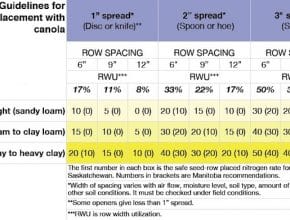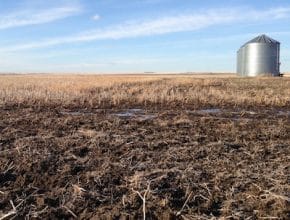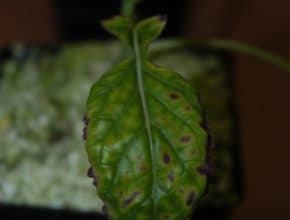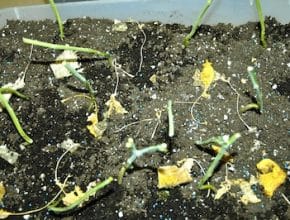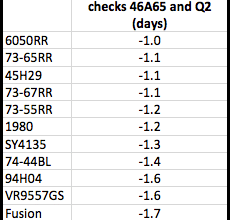Home / Canola Watch / March 11, 2015 - Issue 4
-
The safest method for seed-placed fertilizer is to put nothing with the seed. However, with low-medium soil test results, it’s often beneficial to put ammonium phosphate with the seed at a safe rate, and put all other fertilizers in a band away from the seed row…
-
Temperatures are warmer, days are longer and the fields are bare — in some areas, at least. March is often the month to finalize plans for the 2015 seeding season. This month’s Canola Watch includes our Top 10 agronomy priorities for 2015. See the survey link at the bottom of the article to provide your own rankings and comments. CanoLAB…
-
The Canola Council of Canada agronomy team came up with 12 agronomy priorities for 2015, and then ranked them. Here are the top 10, with our highest ranked topic placed first. We will cover these topics in more detail throughout 2015…
-
CanoLAB 2015 wraps up this week in Brandon. The following short summaries from a few of the many CanoLAB instructors outline key “take home” messages for the eight topic areas…
-
Phosphorus fertilizer rates have, pretty generally, lagged crop removal for some time. As crops remove the soluble phosphorus in the soil, the soil’s large reserve of less soluble forms will transfer some more phosphorus into the available “labile” pool. However, this labile pool may be losing its ability to keep up, resulting in a “hidden hunger” for phosphate in many…
-
Canola has a high demand for sulphur. Because of high sulphur variability across most fields, the common recommendation is to apply 10-15 lb./ac. of sulphur when soil test results show adequate levels and 20-25 lb./ac., or more, when tests show deficient levels. Read more for product options and when to use them…
-
As part of UCC 2015, the CCC agronomy team is looking for 12-15 growers from across the Prairies to test boron in field-scale trials in 2015…
-
Stephen Strelkov with the University of Alberta tested soil samples from 27 fields in Alberta that were seeded to resistant varieties in 2014 and showed more than expected levels of gall formation. Of those 27 fields, 15 have clubroot pathotypes that suggest the clubroot in those fields had overcome the resistance trait…
-
Growers sometimes prefer earlier maturing canola varieties given their season zone or if spring seeding is later than expected. Here is a list of all NAMED varieties supported for registration at WCC/RRC since 2009 that have maturity of at least 1.0 day earlier than the checks. If this list is missing shorter-season varieties currently on the market, please email Jay…

